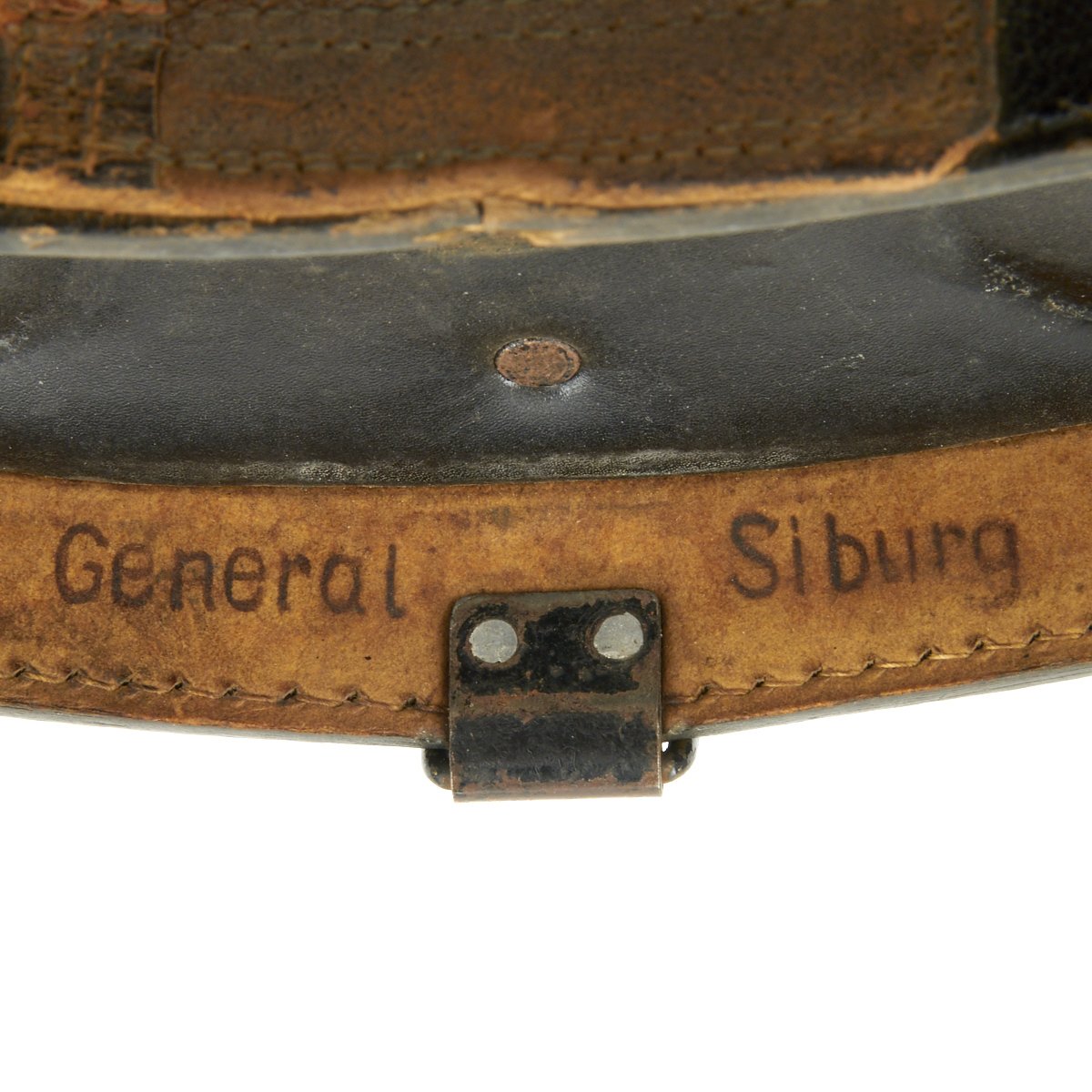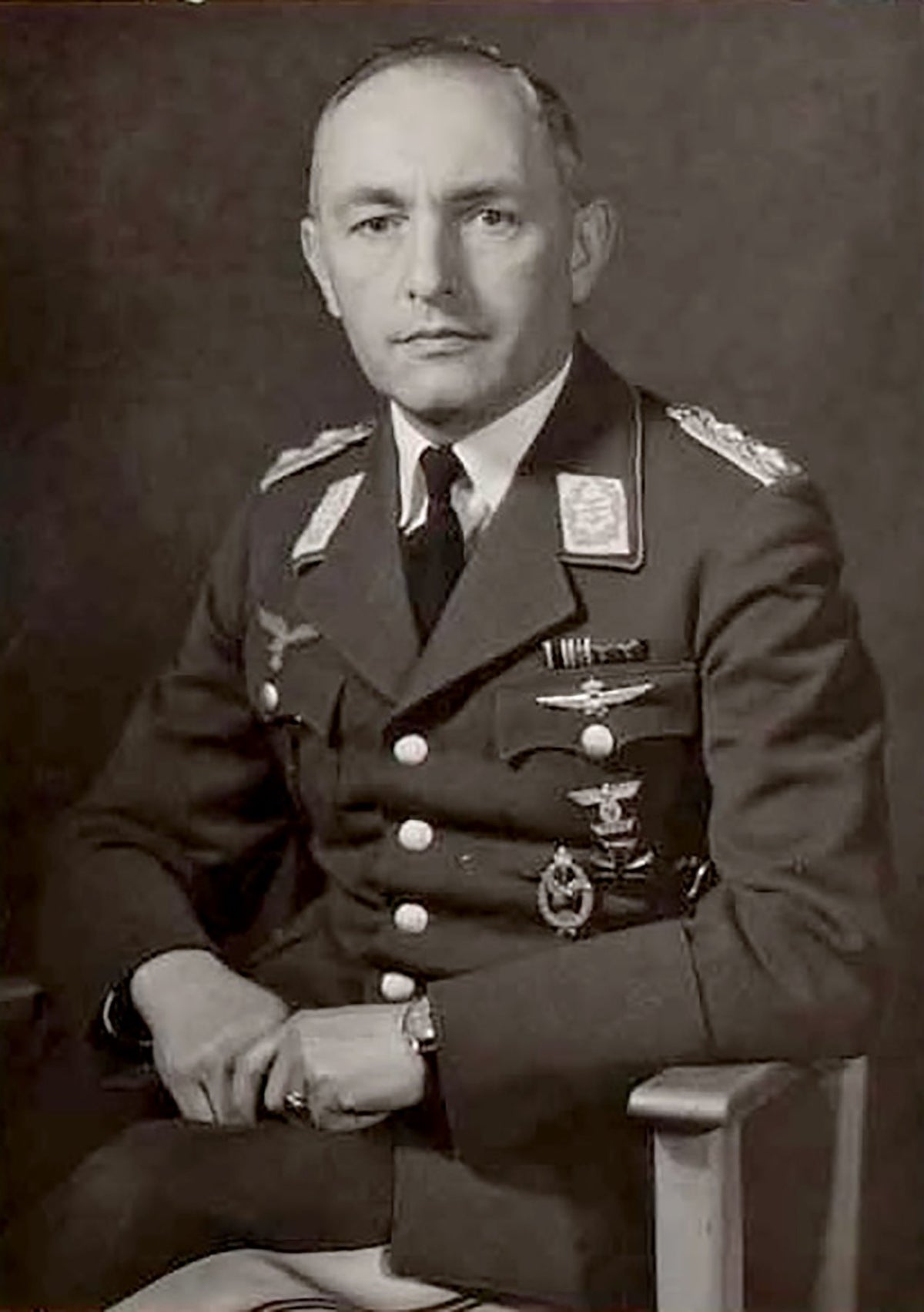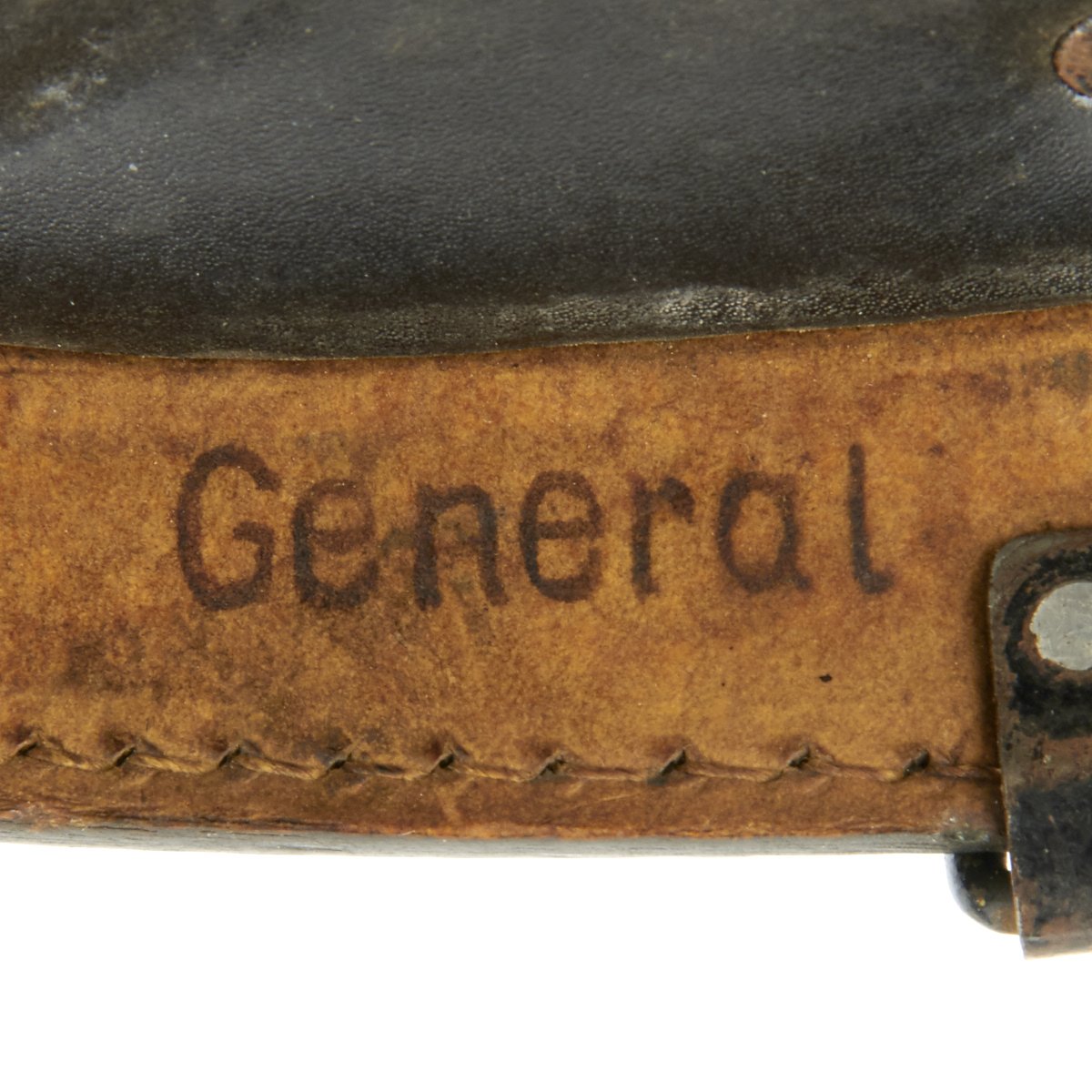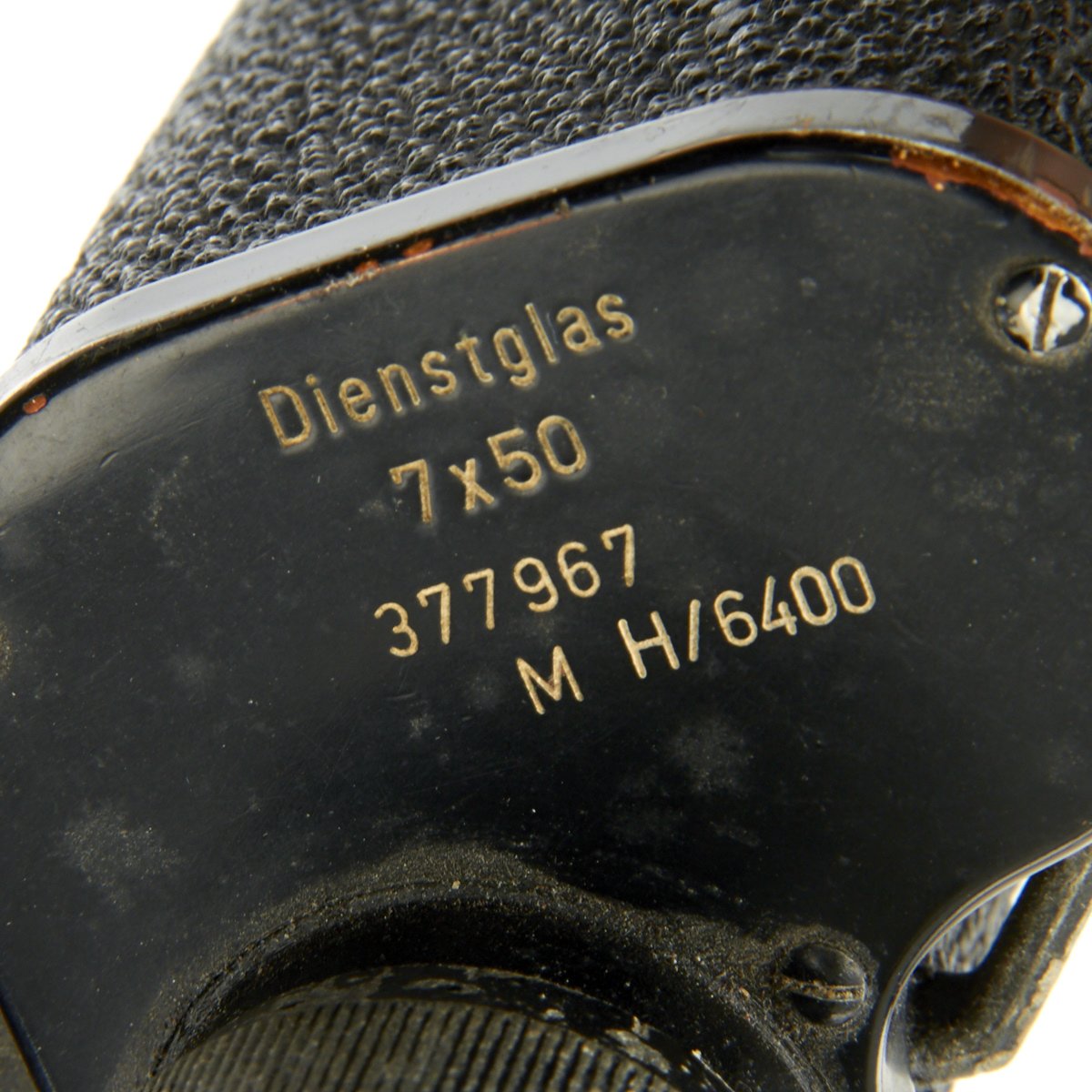Original German WWII General der Flieger Hans Siburg 7×50 Dienstglas Binoculars with 1939 Dated Case Original Items
$ 1.595,00 $ 398,75
Original Item: One-of-a-kind. Field Glasses that belonged to General der Flieger Hans Siburg Luftwaffe Commander of Holland from July 1st, 1940 to August 1943. These field glasses brought back as a war trophy by Corporal Rudy L. Sloan ASN 34980903 of Company H, 502nd Parachute Infantry Regiment, 101st Airborne Division. In 1995 Rudy Sloan sold them to a private collector. Rudy Sloan was born in June 1921 in Fellesmere, Florida and lived in Sanford Florida until he passed in 2003.
German WWII 7×50 Dienstglas Binoculars marked beh with 1939 Dated Case nicely marked GENERAL SIBURG to the interior of the leather lid. The marking appears to be branded. These are very good condition binoculars known by the German Wehrmacht as a Dienstglas. They are marked beh indicating they were manufactured by one of the very best makers at the time Ernst Leitz Gmbh, of Wetzlar, Germany.
The optics are clear, everything functions, they are complete with bakelite eye cup cover.
The hard shell black leather case with heavy white stitching is very good. The front of the case, on the lip of the top edge, is stamped with German manufacturing data for CARL BORG and is dated 1939. Overall condition of binoculars and case is very good.
Set come complete with a few photo copies and printed scans as well as some reproduction patches for added display appeal.
Siburg joined the Imperial Navy on 1 April 1912 and served as a seafarer during World War I when he was captured by the Russians in 1916. After his release in 1917 and the later termination of the war, he remained with the now renamed Imperial Navy. After he was promoted to Lieutenant Captain on 1 May 1925, he was appointed to July 1, 1930 commander of the Corvette.
On September 1, 1933, he moved as a lieutenant colonel in the Reich Ministry of Aviation to take over a department. On June 1, 1934, he took over the office of an inspector of schools, before he became commander of the Fliegerschule See in Warnemünde on 8 June. On February 1, 1936, he went to flyer group Tutow, then from March 15 to the flying group Merseburg where he was also promoted to colonel. On April 1, 1936 he took over as Geschwaderkommodore the Kampfgeschwader 153, the later Kampfgeschwader 3. On 1 September he joined the staff of the Luftkreiskommando VII as First General Staff Officer. On November 1, 1938, he took over, with the Fighter Squadron 257, again a bomber squadron as a commodore. This squadron, since May 1, 1939 renamed Battle Squadron 26 had its focus in the naval warfare. Siburg led this squadron with his Heinkel He 111 still in the Polish campaign before he became on September 29, Inspector of Air Navigation, Blind Flight and Weather Service in the General Staff of the Air Force. On 6 May 1940 he took over the leadership of Luftgaukommandos Norway, which was under the 5 Air Fleet in Oslo. But as early as July 1, 1940, he moved to the German-occupied Netherlands to take over the post of commanding general and commander in Luftgau Holland. At this point he was promoted to lieutenant general on 1 November 1940 and on April 1, 1942 to the general of the airmen. It was not until August 7, 1943, he joined the Reich Ministry of Aviation as head of the Air Force Administration Office. There he received on March 20, 1944, the German Cross in gold, before he was from April 1, 1945, without a task available. He was on May 10, 1945 in British captivity from the on December 5, 1945 was released.
Fast Shipping with Professional Packaging
Thanks to our longstanding association with UPS FedEx DHL, and other major international carriers, we are able to provide a range of shipping options. Our warehouse staff is expertly trained and will wrap your products according to our exact and precise specifications. Prior to shipping, your goods will be thoroughly examined and securely secured. We ship to thousands clients each day across multiple countries. This shows how we're dedicated to be the largest retailer on the internet. Warehouses and distribution centres can be located throughout Europe as well as the USA.
Note: Orders with more than one item will be assigned a processing date depending on the item.
Before shipping before shipping, we'll conduct a thorough inspection of the items you have ordered. Today, the majority of orders will be delivered within 48 hours. The delivery time will be between 3-7 days.
Returns
The stock is dynamic and we cannot completely manage it because multiple stakeholders are involved, including our factory and warehouse. So the actual stock may alter at any time. It's possible that you may not receive your order once the order has been made.
Our policy is valid for a period of 30 days. If you don't receive the product within 30 days, we are not able to issue a refund or an exchange.
You can only return an item if it is unused and in the same state as the day you received it. You must have the item in its original packaging.
Related products
Uncategorized
Uncategorized
Uncategorized
Uncategorized
Uncategorized
Uncategorized
Australian WWII Owen MK1 Machine Carbine SMG Custom Fabricated Replica with Sling Original Items
Uncategorized
Uncategorized
Uncategorized
Uncategorized
Uncategorized
Uncategorized
Uncategorized
Angolan Rebel 1970s era 60mm Inert Display Mortar from Angolan Civil War Original Items
Uncategorized
Uncategorized
Uncategorized
Uncategorized













































































